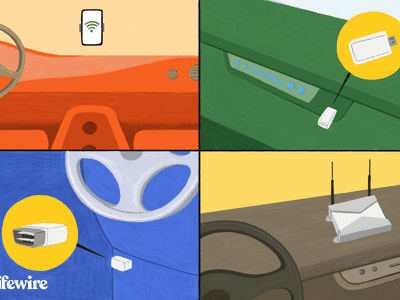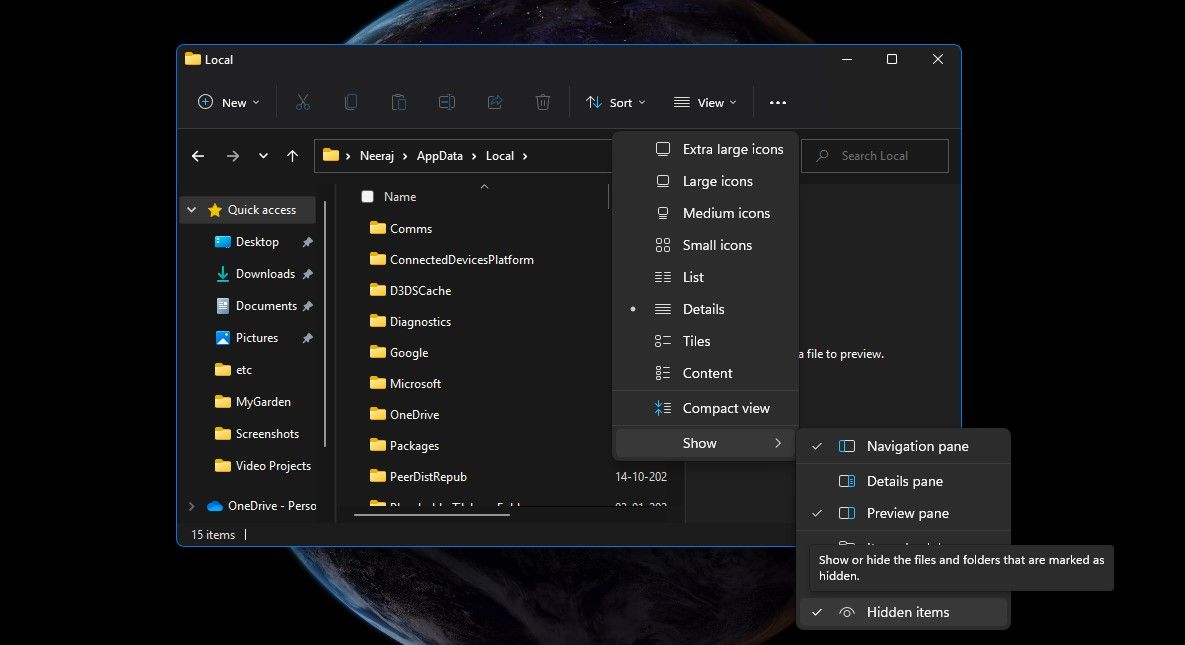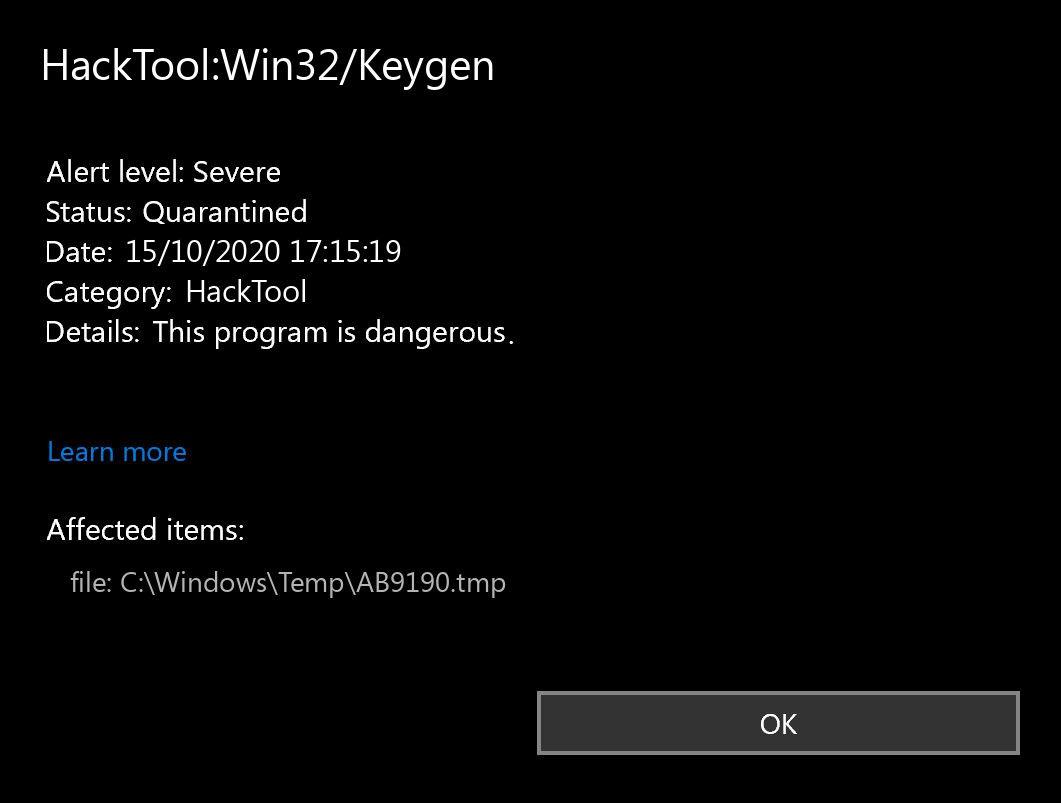
Win32/Keygen: Understanding, Identifying & Neutralizing Its Threat to Windows

Win32/Keygen: Understanding, Identifying & Neutralizing Its Threat to Windows
Have you run a scan on your device and found it infected with HackTool:Win32/Keygen? Windows Defender may have automatically alerted you about the presence of this malware after you used a crack or key generator to activate a premium software. Is it a serious threat, and can you remove it easily?
In this article, we’ll explain the malware in more detail, how it infected your device, and what you can do to remove it.
How Does HackTool:Win32/Keygen Infect a Device?
Recent years have seen an upswing in the popularity of software cracks and fake key generators. Using these tools, users can unethically activate licenses for third-party software that would usually cost them a fair amount.
As these tools are freely available on third-party websites and many internet users are constantly looking for ways to obtain premium software at no cost, hackers use them to spread malware.
Therefore, scammers bundle malware with a key generator, and when users download and install such programs on their devices, the victims unknowingly allow viruses to invade them. Sadly, the whole thing happens with the victim’s consent. The HackTool:Win32/Keygen virus also gets inside a victim’s device with the help of similar fake key generators.
What Makes HackTool:Win32/Keygen a Serious Threat?
HackTool:Win32/Keygen malware is categorized as a dangerous program by Microsoft Defender with a Severe threat level.
This malware poses a severe threat due to its ability to automatically create executable files within the key generator or the software you activated. Files of this nature are hard to locate, and infection will remain on your device until these files are removed.
Although Microsoft Defender often quarantines this threat, which limits its ability to spread further, it cannot automatically remove it. Therefore, it may be found on your device every time you run a scan. The only way to completely remove the malware from your device is by taking the manual route.
company, user or members of the same household. Action! - screen and game recorder</a>
How to Remove the HackTool:Win32/Keygen Virus From Your Device?
If you want to remove HackTool:Win32/Keygen virus from your device effectively, you should take the following steps one by one, in the same order:
1. First, Remove the Infected Files
In most cases, malware infects some files that Windows Defender detects and alerts users about. In the Protection History, where the detected threat appears, we can see the name and location of the infected files. Therefore, you should remove the infected files first. Follow these steps to do that:
- Search forWindows Security in Windows Search and open theWindows Security app.
- Next, click onProtection history in the left sidebar.

- View the threat dialog for HackTool:Win32/Keygen.

- Take note of the location where the threat was detected.
- Paste it into File Explorer.
- Delete the infected file.
Most HackTool:Win32/Keygen infected files are in the Windows temp folder. Therefore, it is recommended to delete all temporary files in Windows , even those not infected.
2. Remove the Culprit Software
Next, you should remove any key generator software or crack you have used to activate the software’s premium features. Follow these steps to do that:
- In the Windows Search box, type**”Control Panel.”**
- Open theControl Panel app.
- Navigate toPrograms and Features .
- Find the key generator software you just installed.
- Upon finding it, right-click it and selectUninstall .

3. Delete the Suspicious Files From the Main Software
Activating software with cracks or fake key generators alters the software files to make them appear as if the software was activated. Depending on the crack you’re using, it may add some malicious files to the software folder so that its premium features remain active. So deleting the key generator software alone won’t help much.
To eradicate the malware, you must remove these extra malicious files from the main software folder. Since most malicious files are hidden in the folder, you must unhide them first. To do this, click theView tab, expand theShow menu and clickHidden items .

Following that, follow these steps to remove the malware files from the recently activated software:
- Open theFile Explorer .
- Open the installation folder for the software you used a crack or key generator for.
- Look through its files and folders to see if you find anything suspicious.
- If you notice a suspicious or extra file, search the file name on the web to see if it’s part of your primary software or the suspicious file you need to get rid of.
- Delete the file from your device if it is not part of the main software.

Delete these files and run a Microsoft Defender scan again. Following that, check the Protection History to see if the threat still exists. If the threat is present, you should then use a third-party malware removal tool to remove the malware.
4. Make Use of a Third-Party Virus Removal Tool
When manually deleting the key generator software and suspicious files from the main software fails to remove the virus, you should run a virus scan using a third-party virus removal tool. If you don’t already have one, download one from our list of best antivirus software .
After that, install the software and allow it to complete a scan on your device and remove any suspicious files it finds. Upon completing the scan with a dedicated malware removal tool, your device should be malware-free.
What if the antivirus program fails to detect and remove malware, and the malicious files remain hidden on your device? You should then delete the software you activated with a key generator.
5. Remove the Software Itself
The antivirus will likely remove suspicious files, and you won’t need to delete the main software you activated with the malicious crack or key generator software. It should only be considered as a last resort if the problem persists.
The main software can be removed fromControl Panel > Programs and Features . Right-click the software and clickUninstall . Next, go to its installation folder on your device and delete any remaining files and folders.
After removing the virus, it’s imperative to ensure that similar viruses won’t infect your device again. To prevent infection from malware like HackTool:Win32/Keygen, follow these tips:
- Don’t activate the software using third-party key generators.
- Don’t trust sources that promise free installation of software with premium features.
- Download the main software only from official sources only.
- Either pay for premium features or stick with the software’s free features.
- Don’t use crack files to activate software licenses.
- Before downloading a file from a third-party, always scan the link from where you’re downloading it.
Enjoy a Virus-Free Windows
When viruses attack our devices, they slowly devour them like worms. Hopefully, after reading this guide, you’ll better understand HackTool:Win32/Keygen malware. Furthermore, you will be able to remove them from your device. After doing so, take steps to undo any changes the virus has already made to avoid reinfection.
- Title: Win32/Keygen: Understanding, Identifying & Neutralizing Its Threat to Windows
- Author: David
- Created at : 2024-08-16 00:19:43
- Updated at : 2024-08-17 00:19:43
- Link: https://win11.techidaily.com/win32keygen-understanding-identifying-and-neutralizing-its-threat-to-windows/
- License: This work is licensed under CC BY-NC-SA 4.0.

 Greeting Card Builder
Greeting Card Builder



